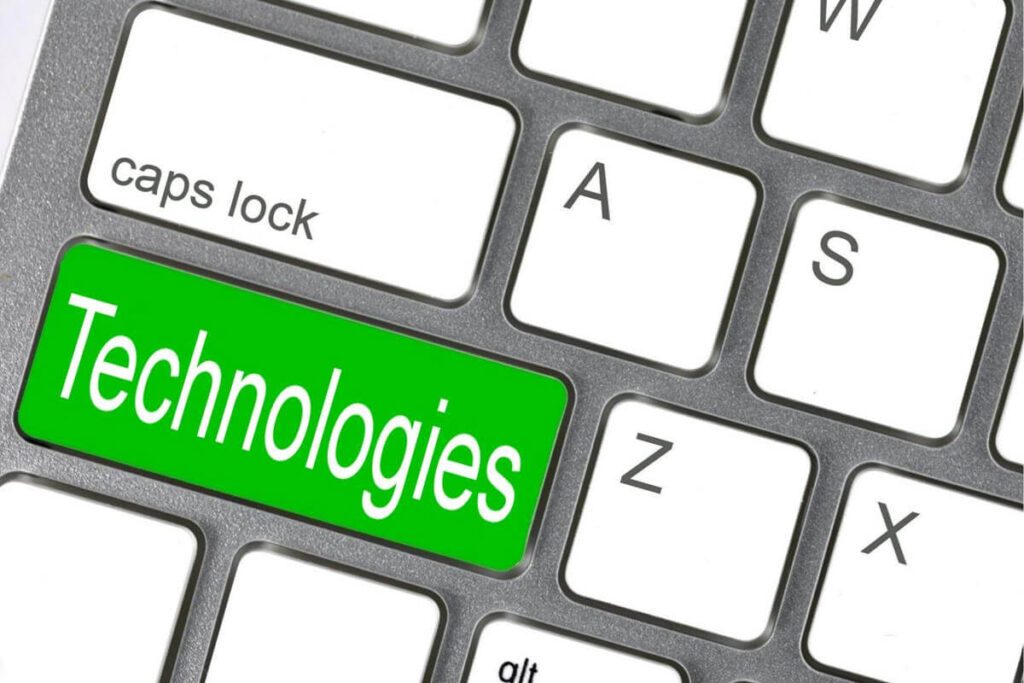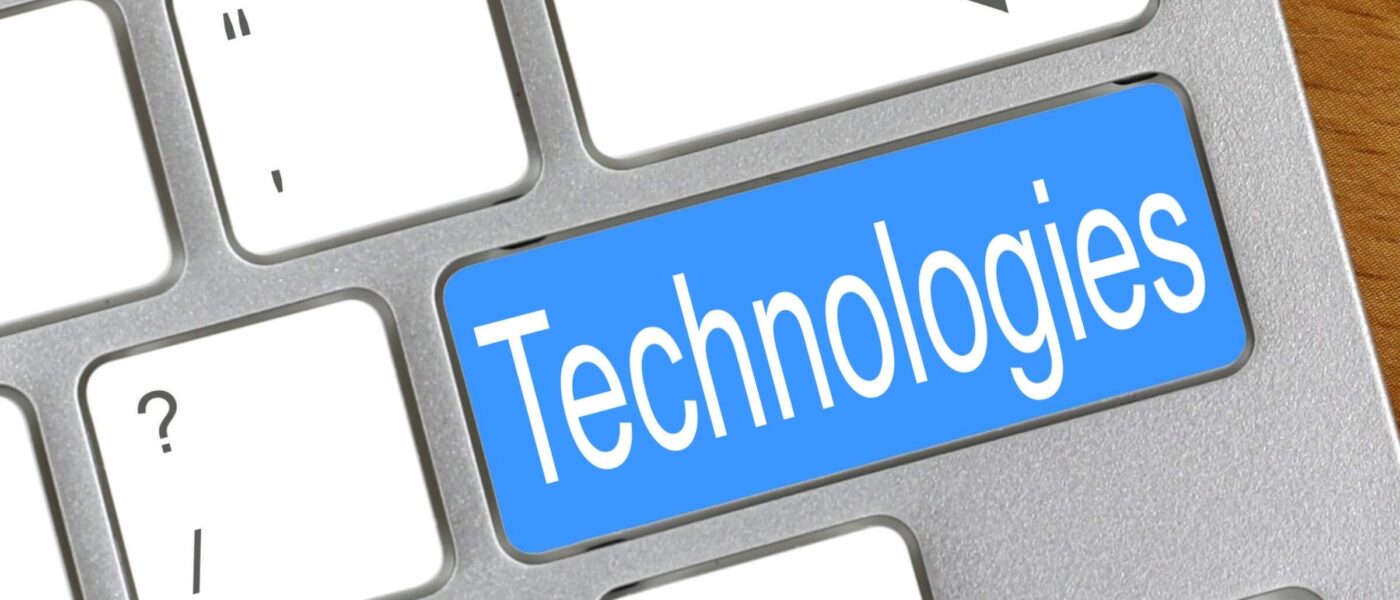The Best of Single Source Technologies
Introduction
Have you ever felt overwhelmed by the sheer amount of data scattered across multiple systems and platforms within your organization? Inconsistent product information duplicated customer records and disconnected digital assets can quickly become a nightmare, leading to inefficiencies, errors, and a fragmented customer experience.
In today’s data-driven world, businesses are turning to a centralized approach known as single source technologies to tame the chaos and unlock the true potential of their data. By establishing a single, authoritative source of truth, organizations can streamline their operations, enhance data quality, and deliver customers a seamless, omnichannel experience.
Single-source technologies represent a paradigm shift in data management, offering a centralized repository for critical information assets. From product catalogs and customer databases to digital media and content, these solutions provide a unified hub that ensures data consistency, accuracy, and accessibility across your organization.

Imagine having a single entry point for all your product data, where changes are instantly reflected across your eCommerce website, marketing materials, and sales channels. Envision a world where customer records are consolidated, enabling personalized experiences and seamless interactions, regardless of the touchpoint.
By adopting single-source technologies, businesses can unlock many benefits, including increased operational efficiency, improved data governance, and enhanced customer satisfaction. This comprehensive guide will take you through single-source technologies, exploring their applications, best practices, and strategies to harness their full potential.
Whether you’re a retailer seeking to streamline your product catalog management, a manufacturer striving for supply chain optimization, or a healthcare provider aiming to improve patient care through unified medical records, this article will provide you with the insights and knowledge you need to embark on your single source technology journey.
Understanding Single Source Technologies: Unlocking the Power of Centralized Data
In the ever-evolving digital landscape, where data is the new currency, organizations increasingly recognize the importance of a unified and centralized approach to data management. Enter single source technologies, a game-changing paradigm that promises to revolutionize how businesses handle and leverage their most valuable asset: data.
What are Single Source Technologies?
Fundamentally, single-source technologies are all-inclusive systems made to handle and combine different kinds of data from different sources into one official repository. This centralized data hub is the one-stop-shop for all critical information assets within an organization, ensuring consistency, accuracy, and accessibility across different departments, channels, and applications.
The primary objective of single-source technologies is to establish a “single source of truth” for data, eliminating the challenges posed by siloed and disconnected systems. By providing a unified view of data, these technologies empower businesses to make informed decisions, streamline operations, and deliver exceptional customer experiences.
Key Components of a Single Source Technologies System
A typical single-source technology solution comprises several vital components that work together seamlessly to facilitate effective data management:
1. Centralized Data Repository: The heart of the system, this repository serves as the central hub where all data is stored, organized, and maintained.
2. Data Integration and Consolidation: Sophisticated tools and processes are employed to extract, transform, and load (ETL) data from various sources into the centralized repository.
3. Data Governance and Quality Management: Robust data governance policies and procedures ensure data integrity, accuracy, and compliance with industry regulations and internal standards.
4. Access and Distribution Mechanisms: APIs, web services, and other integration points enable real-time access and distribution of data to various applications, channels, and stakeholders within the organization.
5. User Interface and Administration Tools: A user-friendly interface and administrative tools facilitate data management, reporting, and analytics capabilities.
Difference between Single Source and Multi-Source Systems
Traditional multi-source systems rely on dispersed data sources, often leading to data silos, inconsistencies, and duplication. In contrast, single source technologies consolidate and centralize data, providing a unified view and ensuring data integrity across the organization.
One of the significant advantages of single-source technologies is their ability to streamline data management processes. Organizations can eliminate the need to synchronize and reconcile data across multiple systems manually, reduce redundancies, minimize errors, and improve operational efficiency.
Example:
Consider a retail organization managing product information across various channels, such as an eCommerce website, print catalogs, and brick-and-mortar stores. A multi-source system might store and maintain product data separately for each channel, leading to consistency and challenges in maintaining accurate and up-to-date information.
However, by implementing a single source technology like a Product Information Management (PIM) system, the retailer can centralize all product data into a single repository, including descriptions, specifications, pricing, and digital assets. Any changes or updates to the product data are automatically reflected across all channels, ensuring a consistent and seamless customer experience.
Businesses can enhance decision-making, operational efficiency, and customer happiness by fully utilizing their data by comprehending the fundamental ideas and elements of single-source technology.
In the following sections, we’ll dive deeper into the various types of single-source technologies, their applications, and best practices for successful implementation and data governance.

Unveiling the Different Types of Single Source Technologies
In the quest to establish a unified and centralized approach to data management, organizations have an array of single-source technology solutions. Each type of solution is tailored to cater to specific data management needs and industry requirements. Let’s explore the most prominent types of single-source technologies and their unique capabilities.
1. Product Information Management (PIM) Systems
Retail and eCommerce businesses often face the daunting challenge of managing vast product information catalogs across multiple channels. PIM systems are the best option since they serve as a central location for organizing, distributing, and storing product data, such as digital assets, specs, prices, and more.
Key Features of PIM Systems:
- Centralized Product Catalog: A single repository for all product data, ensuring consistency across channels.
- Data Enrichment and Syndication: Tools for enhancing product data with rich media, translations, and distributing it to various sales channels.
- Workflow Management: Streamlined product data creation, review, and approval processes.
- Digital Asset Management: Integrated storage and management of product images, videos, and other digital assets.
Notable PIM Solution Providers: Akeneo, Salsify, Perfion, InRiver.
2. Master Data Management (MDM) Solutions
In complex organizations, master data – such as customer information, supplier data, and product catalogs – is often scattered across multiple systems. MDM solutions provide a centralized platform for consolidating, standardizing, and governing this critical data, ensuring data quality and consistency across the enterprise.
Key Features of MDM Solutions:
- Data Consolidation: Integrating and merging master data from various sources into a single repository.
- Data Governance: Robust tools for enforcing data quality standards, processes, and policies.
- Data Stewardship: Roles and responsibilities for managing and maintaining master data.
- Data Syndication: Distributing and synchronizing master data to various operational systems.
Notable MDM Solution Providers: Informatica, SAP , IBM, Oracle.
3. Digital Asset Management (DAM) Platforms
In the digital age, organizations amass many rich media assets, including images, videos, audio files, and documents. DAM platforms provide a centralized repository for storing, organizing, and distributing these digital assets, ensuring consistency and accessibility across various channels and applications.
Key Features of DAM Platforms:
- Centralized Asset Repository: A single location for storing and organizing digital assets.
- Metadata Management: Powerful tools for tagging, categorizing, and searching assets based on metadata.
- Version Control and Collaboration: Tracking asset versions and enabling team collaboration.
- Digital Rights Management: Controlling access and usage rights for digital assets.
Notable DAM Solution Providers: Adobe Experience Manager, Widen, Bynder, Canto.
4. Centralized Content Management Systems (CMS)
While traditional CMSs focus on managing website content, centralized CMSs take a broader approach by consolidating and managing structured and unstructured content from various sources. These solutions ensure consistency across many channels and apps by acting as a single source of truth for all content assets.
Key Features of Centralized CMS:
- Centralized Content Repository: A unified hub for storing and managing all content types (web, documents, multimedia, etc.).
- Content Lifecycle Management: Tools for creating, reviewing, approving, and publishing content.
- Omnichannel Distribution: Delivering content to multiple channels (web, mobile, print, etc.) from a single source.
- Taxonomy and Metadata Management: Organizing and classifying content based on taxonomies and metadata.
Notable Centralized CMS Providers: Contentful , Storyblok, Contentstack , Prismic.
While each type of single-source technology serves a specific purpose, organizations may choose to implement multiple solutions to address their diverse data management needs. For example, a manufacturer might leverage a PIM system for product data, an MDM solution for customer and supplier data, and a DAM platform for managing digital assets.
By understanding the different types of single-source technologies and their unique capabilities, businesses can make informed decisions and select the solutions that best align with their requirements, industry, and data management goals.
Single Source Technologies: Real-World Applications and Key Considerations
Single-source technologies have revolutionized how organizations approach data management, offering a centralized and unified solution to the challenges posed by siloed and disconnected systems. However, the true power of these technologies lies in their ability to address specific business needs across various industries and use cases. In this section, we will explore the diverse applications of single-source technologies and the critical factors to consider when choosing the right solution and ensuring effective implementation.
Applications and Use Cases
Retail and eCommerce
In the fast-paced world of retail and eCommerce, consistent and accurate product data is the backbone of a seamless customer experience. Single source technologies, such as Product Information Management (PIM) systems and Digital Asset Management (DAM) platforms, play a pivotal role in streamlining product catalog management and ensuring data consistency across multiple channels, including online stores, print catalogs, and brick-and-mortar locations.
By centralizing product information, including descriptions, specifications, pricing, and digital assets, retailers can eliminate data silos and minimize the risk of inconsistencies. Any updates or changes made to the product data are automatically reflected across all channels, ensuring a cohesive and omnichannel customer experience.
Manufacturing
The manufacturing industry heavily relies on accurate and up-to-date product data, from engineering specifications and bills of materials (BOMs) to supply chain information. Master Data Management (MDM) solutions emerge as a game-changer, providing a centralized repository for consolidating and governing critical product data.
By implementing an MDM solution, manufacturers can streamline their operations, optimize supply chain processes, and ensure industry regulations and standards compliance. Organizations can minimize errors, reduce costs, and improve decision-making across the entire product lifecycle with a single source of truth for product data.

Healthcare
The need for accurate and comprehensive medical data must be balanced in the healthcare sector, where patient safety and clinical decision-making are balanced. Single-source technologies, such as Electronic Health Record (EHR) systems and Clinical Data Repositories (CDRs), are crucial in consolidating and managing patient records, medical histories, and clinical data from various sources.
By centralizing patient data, healthcare providers can ensure consistent and up-to-date information is available to healthcare professionals, enabling better patient care and informed decision-making. Additionally, these solutions help healthcare organizations comply with stringent regulations, such as HIPAA and GDPR, by providing robust data governance and security measures.
Finance and Banking
The financial services industry relies heavily on accurate and consistent customer data, spanning accounts, transactions, and risk profiles. Single-source technologies, like Customer Data Platforms (CDPs) and MDM solutions, provide a centralized hub for consolidating and managing customer data from various sources, enabling better customer service, risk management, and compliance with regulatory requirements.
By implementing these solutions, financial institutions can eliminate data silos, enhance data quality, and gain a comprehensive understanding of their customers, enabling personalized experiences, fraud detection, and effective risk management strategies.
Choosing the Right Single Source Technologies
With the diverse range of single-source technology solutions available, choosing the right one for your organization can be daunting. It is crucial to thoroughly assess your unique needs and requirements in order to guarantee a successful implementation and optimize the benefits.
1. Define Your Goals and Objectives: Establishing a clear definition of your company’s aims and objectives for utilizing single source technologies is a good place to start. Are you looking to streamline product catalog management, consolidate customer data, or centralize digital assets?
2. Assess Your Current Data Landscape: Conduct a thorough assessment of your existing data sources, systems, and processes. Identify any potential data silos, inconsistencies, or quality issues that need to be addressed.
3. Consider Scalability and Future Growth: Select a system that can expand with the needs and expansion of your company. Take into account variables including the amount of data, the user base, and any foreseeable future expansions or connections.
4. Evaluate Integration Capabilities: Ensure that the single source technology you choose can seamlessly integrate with your existing systems and applications. Look for solutions with robust APIs, data exchange protocols, and pre-built connectors to facilitate smooth data integration and interoperability.
5. Prioritize User Experience and Adoption: A user-friendly interface and intuitive tools can greatly influence user adoption and productivity. Consider solutions offering personalized dashboards, workflow automation, and robust reporting capabilities.
6. Assess Vendor Support and Expertise: Evaluate the vendor’s reputation, expertise, and commitment to ongoing support and product development. A reliable and knowledgeable vendor can be invaluable in ensuring a smooth implementation and long-term success.
7. Think about the Total Cost of Ownership (TCO): While the upfront cost is essential, it’s crucial to consider the total cost of ownership, including implementation, training, maintenance, and potential future upgrades or expansions.
By carefully evaluating these factors and aligning them with your organization’s needs, you can increase the likelihood of selecting the most suitable Single Source Technologies solution and maximizing your return on investment.
Data Governance and Quality Management
Implementing a single source technology is the first step; ensuring high-quality data and effective data governance is equally crucial. Data governance encompasses the policies, processes, and strategies that ensure data integrity, accuracy, and compliance with internal and external standards.
1. Establish Data Governance Policies: Provide thorough policies outlining the procedures, roles, and duties involved in managing data throughout its lifecycle. These policies should address data quality standards, stewardship, and security.
2. Define Data Quality Metrics: Establish clear metrics and key performance indicators (KPIs) to measure and monitor data quality. This could include completeness, accuracy, consistency, and timeliness.
3. Implement Data Cleansing and Standardization: To find and fix problems with data quality, such as duplicates, inconsistencies, and formatting errors, use data cleansing and standardization technologies. This ensures that the data in your Single Source Technologies system is clean, accurate, and consistent.
4. Assign Data Stewards and Owners: Designate data stewards and owners responsible for overseeing data quality, enforcing governance policies, and ensuring data integrity within their respective domains or business units.
5. Conduct Regular Data Audits: Implement a regular data auditing process to identify and address data quality issues, compliance violations, or deviations from established policies and standards.
6. Provide Training and Education: To make sure that all stakeholders—including data stewards, business users, and IT staff—understand the significance of data governance and quality management, invest in training and educational initiatives.
By implementing robust data governance and quality management practices, organizations can ensure that their Single Source Technologies solution remains a reliable and trustworthy source of truth, enabling better decision-making, operational efficiency, and compliance.
Integration and Interoperability
Although single source technologies offer a consolidated data repository, their real strength is found in its capacity to integrate and work with other applications and systems already present in the technology landscape of a company. Effective integration ensures seamless data exchange, synchronization, and accessibility across various touchpoints.
1. API and Data Exchange Protocols: Leverage robust APIs and industry-standard data exchange protocols, such as REST, SOAP, or OData, to facilitate data integration and communication between the single source technology and other systems.
2. Data Synchronization and Replication: Implement mechanisms for real-time or scheduled data synchronization and replication to ensure that data updates and changes are propagated across all connected systems promptly and consistently.
3. Data Transformation and Mapping: Utilize data transformation and mapping tools to ensure data formats, structures, and schemas are compatible across different systems, enabling seamless data exchange and integration.
4. Event-Driven Architecture: Adopt an event-driven architecture that triggers specific actions or data updates based on predefined events or conditions, enabling real-time data access and updates across integrated systems.
5. Integration Platform or Hub: Consider implementing an integration platform or hub that acts as a centralized point for managing and orchestrating data integration between the single source technology and other systems within your technology ecosystem.
6. Legacy System Integration: Address the challenge of integrating with legacy systems by leveraging appropriate adapters, connectors, or middleware solutions to bridge the gap between modern and legacy technologies.
7. Monitoring and Governance: Establish monitoring and governance processes to ensure the integrity, reliability, and performance of your integration solutions, including error handling, data validation, and auditing capabilities.
By ensuring seamless integration and interoperability, organizations can unlock the full potential of their Single Source Technologies, enabling real-time data access, consistent data updates, and streamlined workflows across various systems and applications.
Security and Compliance Considerations
Addressing security and compliance concerns becomes paramount as organizations consolidate and centralize their data through Single Source Technologies. Strong security protocols and conformity to industry norms and guidelines are necessary to safeguard confidential information, preserve individual privacy, and guarantee company continuity.
1. Data Security and Access Controls: It is imperative to provide strong access controls and authentication techniques to guarantee that data within the single source technology can only be accessed and modified by authorized users and systems. This includes role-based access controls, multi-factor authentication, and granular permissions management.
2. Data Encryption: To prevent unwanted access and data breaches, encrypt critical data both in transit and at rest using industry-standard encryption methods and protocols.
3. Compliance with Industry Regulations: Ensure your single source technology solution complies with relevant industry regulations and standards, such as GDPR, CCPA, HIPAA, or PCI-DSS, depending on your organization’s industry and geographic presence.
4. Data Privacy and Protection: Implement measures to protect the privacy of individuals whose personal data is stored within the single source system. This may include anonymization, pseudonymization, and consent management processes.
5. Audit Trails and Data Lineage: Maintain detailed audit trails and data lineage records to track data changes, access, and modifications within the system. This information can be invaluable for investigations, audits, and compliance reporting.
6. Disaster Recovery and Business Continuity: To guarantee the availability and resilience of your Single Source Technologies solution in the case of system failures, natural catastrophes, or other disruptive events, create strong disaster recovery and business continuity strategies.
7. Security Testing and Monitoring: To detect and reduce any security threats and hazards, conduct continuous monitoring, vulnerability assessments, and security testing on a regular basis.
8. Vendor and Third-Party Risk Management: If you leverage third-party vendors or service providers for your Single Source Technologies solution, ensure they adhere to strict security and compliance standards and assess their risk profiles regularly.
By prioritizing security and compliance considerations, organizations can mitigate risks, protect sensitive data, maintain regulatory compliance, and foster trust among stakeholders, customers, and partners who rely on the data managed by their Single Source Technologies solution.

Navigating the Journey of Single Source Technologies
While single source technologies offer numerous benefits and opportunities, their implementation and adoption are not without challenges; in this section, we’ll explore the potential pitfalls and roadblocks organizations may encounter.
Challenges and Pitfalls
1. Data Silos and Resistance to Change: One of the biggest challenges in adopting single source technologies is overcoming the resistance to change and breaking down existing data silos within an organization. Employees and departments may hesitate to relinquish control over their data sources, fearing a loss of autonomy or disruption to established processes.
2. Data Quality and Consistency Issues: Consolidating data from multiple sources can reveal inconsistencies, duplicates, and data quality issues lurking beneath the surface. Addressing these problems can be time-consuming and resource-intensive, requiring data cleansing, standardization, and rigorous data governance processes.
3. Legacy System Integration: Organizations with deeply entrenched legacy systems may face significant challenges integrating them with modern Single Source Technologies. Compatibility issues, outdated data formats, and technical debt can impede seamless data exchange and interoperability.
4. User Adoption and Training: Successful adoption of Single Source Technologies relies heavily on user buy-in and training. Employees may resist new tools and processes, leading to a reluctance to adopt the new system or improper usage, undermining the intended benefits.
5. System Maintenance and Upgrades: Single source technologies are complex systems that require ongoing maintenance, updates, and upgrades. Organizations must be prepared to allocate resources and budget for these recurring tasks to ensure the system remains up-to-date, secure, and continues to meet evolving business needs.
6. Data Governance and Compliance Challenges: Establishing and enforcing robust data governance policies and ensuring compliance with industry regulations can be daunting, especially in organizations with complex data landscapes and global operations.
7. Change Management and Business Process Reengineering: Implementing a single source technology often necessitates a comprehensive review and redesign of existing business processes and workflows. In order to guarantee a seamless transition and reduce operational disruptions, effective change management practices are essential.
By anticipating and proactively addressing these challenges, organizations can mitigate risks, overcome obstacles, and pave the way for a successful implementation of Single Source Technologies.
Future Trends and Innovations
Single source technologies are a dynamic field that is always developing due to both shifting business requirements and technology breakthroughs. Here are some of the future trends and innovations that are shaping the landscape:
1. Learning Machines and Artificial Intelligence: AI and ML increasingly integrate into Single Source Technologies solutions, enabling advanced capabilities such as automated data classification, intelligent data enrichment, and predictive analytics. These technologies can improve data quality, streamline processes, and provide valuable insights for decision-making.
2. Blockchain and Distributed Ledger Technologies: The decentralized and immutable nature of blockchain and distributed ledger technologies (DLTs) offers promising applications in Single Source Technologies data management. These technologies can enhance data integrity, transparency, and auditability while facilitating secure data sharing and collaboration across multiple parties.
3. Cloud-based Single Source Systems: As organizations embrace cloud computing, cloud-based single source technology solutions are gaining traction. These solutions offer scalability, accessibility, and reduced infrastructure costs while enabling seamless integration with other cloud-based applications and services.
4. Internet of Things (IoT) and Edge Computing: The proliferation of IoT devices and the rise of edge computing are generating unprecedented volumes of data. Single Source Technologies must adapt to handle and integrate data from these distributed sources, enabling real-time data processing and analysis at the edge.
5. Augmented Data Management: Augmented data management combines traditional data management techniques with advanced technologies like augmented analytics, natural language processing (NLP), and conversational interfaces. These innovations simplify data access, analysis, and decision-making for business users.
6. Data Fabric and Mesh Architectures: Data fabric and mesh architectures are emerging as new paradigms for managing and integrating data across distributed and heterogeneous environments. These architectures can enable more flexible and scalable data management while promoting data ownership and governance at a granular level.
7. Unified Data and Analytics Platforms: It is becoming more and more common to combine several data management functions, like analytics, master data management, data integration, and data quality, into single platforms. These platforms aim to provide a consolidated and streamlined data management and analysis approach.
Case Studies and Success Stories
While the benefits and potential of Single Source Technologies are well-documented, real-world examples and success stories can provide valuable insights and lessons learned. Here are a few case studies that showcase the impact of implementing Single Source Technologies across different industries:
- Global Retailer: Streamlining Product Data Management:
A leading global retailer with operations spanning multiple countries and channels implemented a Product Information Management (PIM) system to centralize and manage its vast product catalog. The retailer achieved consistent and accurate product information across all sales channels by consolidating product data, including descriptions, specifications, pricing, and digital assets. This resulted in a seamless omnichannel customer experience, increased operational efficiency, and reduced data maintenance and update costs.
- Automotive Manufacturer: Optimizing Supply Chain and Product Lifecycle Management:
An automotive manufacturer leveraged a Master Data Management (MDM) solution to consolidate and govern product data, including engineering specifications, bills of materials (BOMs), and supplier information. By establishing a single source of truth for this critical data, the manufacturer streamlined its supply chain processes, improved collaboration with suppliers, and gained greater visibility into product lifecycle management. This reduced costs, increased operational efficiency, and enhanced compliance with industry standards and regulations.
- Healthcare Provider: Enhancing Patient Care through Unified Medical Records:
A leading healthcare provider implemented a centralized Electronic Health Record (EHR) system to consolidate patient data from various sources, including hospital information systems, clinics, and laboratories. The healthcare provider improved clinical decision-making, reduced medication errors, and provided more personalized and coordinated care by establishing a comprehensive and up-to-date view of each patient’s medical history.
- Financial Services Firm: Improving Customer Experience and Risk Management:
A major financial services firm adopted a Customer Data Platform (CDP) to consolidate customer data from multiple sources, including banking accounts, investment portfolios, and customer relationship management (CRM) systems. The firm could deliver personalized financial services, tailored product recommendations, and enhanced customer experiences across all touchpoints by establishing a unified view of customer data.
They highlight the potential for increased operational efficiency, improved customer experiences, enhanced decision-making, and better regulation compliance. However, it’s important to note that successful implementation often requires careful planning, data governance, and change management strategies tailored to each organization’s unique needs and challenges.
Conclusion: Single Source Technologies
Single Source Technologies have emerged as a powerful solution to the challenges posed by siloed and disconnected data sources, offering organizations a centralized and unified approach to data management. By consolidating critical information assets into a single authoritative repository, businesses can unlock many benefits, including improved data quality, enhanced operational efficiency, and seamless omnichannel customer experiences.
Throughout this comprehensive guide, we’ve explored the various types of Single Source Technologies, their applications across different industries, and the key considerations for choosing the right solution.

While the journey toward adopting Single Source Technologies has its challenges, the potential rewards are substantial. By anticipating and proactively addressing common pitfalls, such as data silos, resistance to change, and user adoption hurdles, organizations can navigate the path to centralized data management with confidence.
As we look to the future, the landscape of Single Source Technologies is poised for further innovation and disruption. Emerging trends like artificial intelligence, blockchain, and edge computing are set to reshape how we approach data management, promising even greater efficiency, security, and insights.
Real-world case studies and success stories testify to the transformative power of Single Source Technologies, showcasing how organizations across various industries have unlocked new levels of operational excellence, customer satisfaction, and compliance through their implementation.
Ultimately, the decision to adopt Single Source Technologies is not just a technological investment but a strategic commitment to harnessing the full potential of an organization’s data assets.

